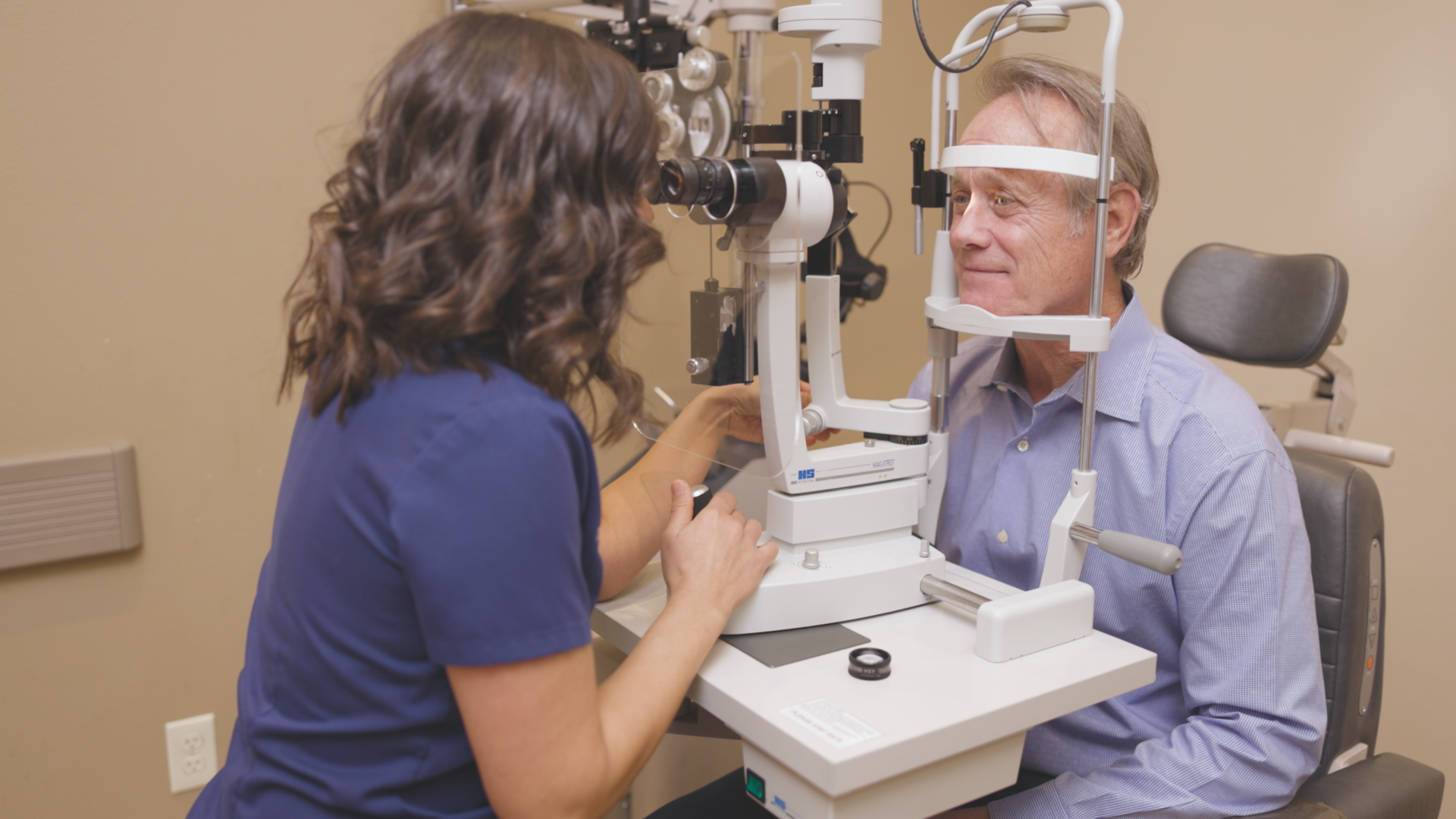Discovering the most up to date Technical Advancements in Optometry and What They Mean for Optometrists
From the accuracy of Optical Coherence Tomography to the nuanced insights used by AI-driven analysis tools, these innovations are setting brand-new criteria in individual assessment and treatment. As these improvements permeate the practice, optometrists are encountered with the difficulty of welcoming these tools to boost client results.
Developments in Diagnostic Equipment
Progressing the field of optometry, innovations in diagnostic devices have actually transformed the way eye care specialists assess and detect ocular conditions and visual disabilities. The past decade has experienced significant technical developments, making it possible for even more exact and detailed evaluations.
An additional key innovation is the introduction of innovative corneal topography systems, which map the surface curvature of the cornea with accuracy. These devices are specifically useful for suitable call lenses and diagnosing corneal problems. Digital retinal imaging has actually changed typical ophthalmoscopy, using comprehensive, panoramic sights of the retina that promote comprehensive visual exams.
The advancement of wavefront aberrometry has actually likewise been essential, allowing the evaluation of refractive errors with unmatched precision (Optometrist Chino). This technology helps in personalizing rehabilitative lenses and boosting surgical results for refractive surgical treatments. Collectively, these analysis developments encourage eye doctors to provide premium client care, making certain early intervention and customized therapy strategies, ultimately improving visual health outcomes
AI in Patient Management
Building on the foundation of advanced diagnostic tools, the unification of fabricated knowledge (AI) in client administration stands for a transformative leap for optometry. AI systems are progressively utilized to enhance effectiveness, accuracy, and customization in individual care.
Additionally, AI-driven platforms facilitate structured client interactions and management processes. Automated scheduling, digital consultations, and individualized follow-up plans not only improve client contentment yet additionally enhance time monitoring for experts. These systems can triage clients based on the seriousness of their conditions, guaranteeing that those in vital demand receive prompt interest.
Moreover, AI enhances decision-making by supplying eye doctors with evidence-based referrals and treatment pathways. By integrating data from digital health and wellness documents, AI tools provide insights that educate medical decisions, minimizing the threat of errors and improving person end results. As AI remains to evolve, its function in client administration will likely broaden, improving the landscape of optometric treatment.
Developments in Retinal Imaging
In the world of optometry, retinal imaging has actually experienced amazing technological improvements that are boosting analysis abilities and individual treatment. Developments such as Optical Comprehensibility Tomography (OCT) and fundus photography have revolutionized how optometrists imagine and assess the retina. OCT, specifically, gives high-resolution, cross-sectional images of the retina, enabling the in-depth evaluation of its layers. This capability is important for early detection and administration of problems like glaucoma, diabetic retinopathy, and age-related macular degeneration.
Improved imaging methods like OCT angiography are further refining diagnostic accuracy. This non-invasive strategy maps blood circulation in the retina, using important insights right into vascular health and wellness without the demand for color injections. Furthermore, adaptive optics technology is being incorporated into retinal imaging systems to correct eye aberrations, supplying unmatched picture clearness. Such improvements promote the identification of minute retinal adjustments that can indicate disease progression.
Furthermore, advancements in fabricated knowledge are boosting retinal imaging by making it possible for automated analysis of huge datasets. These systems assist optometrists in determining patterns indicative of pathology, thereby improving analysis precision and performance. Jointly, these advancements are changing retinal imaging right into a cornerstone of modern eye care, enhancing results and increasing healing possibilities.
Teleoptometry's Growing Function
Teleoptometry is increasingly coming to be a crucial part of eye care, driven by advancements in digital communication and analysis devices. As optometry embraces digital change, teleoptometry facilitates remote consultations, allowing optometrists to expand their solutions past typical borders. This is specifically advantageous in country and underserved areas where accessibility to specialized eye treatment is typically limited. By leveraging high-resolution video clip conferencing and advanced retinal imaging, eye doctors can carry out comprehensive eye tests from afar, making certain timely diagnosis and therapy.
The assimilation of expert system (AI) additional enhances teleoptometry, enabling the evaluation of aesthetic data and Clicking Here assisting in the discovery of ocular conditions such as glaucoma and diabetic person retinopathy. AI-powered find out here algorithms can quickly translate complex imaging information, supplying optometrists with useful insights that strengthen scientific decision-making.
Furthermore, teleoptometry sustains continuity of treatment with seamless assimilation with digital health and wellness records (EHRs), allowing optometrists to keep comprehensive patient histories. When seeking advice from with different professionals., this makes sure that people obtain personalized and constant care even.
Regardless of these advantages, obstacles stay, including guaranteeing information safety and handling individual expectations. Teleoptometry represents a significant stride in the direction of even more obtainable, reliable, and patient-centered eye treatment. As innovation progresses, its duty is poised to increase better.

Future Patterns in Eye Treatment
A myriad of innovative patterns is readied to reshape the future of eye care, driven by technological improvements and the evolving demands of people. One substantial fad is the assimilation of expert system (AI) in diagnostics, which guarantees to improve the precision and efficiency of eye evaluations. AI algorithms can analyze vast amounts of data from retinal images, potentially finding conditions like diabetic person retinopathy and glaucoma earlier than typical methods.
Additionally, individualized medication is acquiring traction in optometry, with hereditary screening educating tailored therapy plans. This technique intends to enhance individual results by tailoring treatments to individual hereditary profiles. Wearable technology, such as smart call lenses, is likewise on the horizon, providing real-time tracking of intraocular pressure or sugar degrees, thus providing constant understandings right into eye and systemic health and wellness.
The fostering of enhanced truth (AR) and digital reality (VIRTUAL REALITY) in training and person education and learning is one more arising trend. These innovations provide immersive experiences that can improve understanding and skills both for eye doctors and individuals. As these fads develop, eye doctors must remain abreast of technological developments to provide cutting-edge care, ensuring improved client results and contentment in the dynamic landscape of eye care.
Conclusion

Jointly, these analysis improvements empower eye doctors to supply superior person care, making certain early treatment and tailored treatment methods, eventually improving aesthetic health and wellness outcomes.

As these modern technologies continue to evolve, optometrists must adapt and incorporate them right into technique, inevitably optimizing workflow effectiveness and raising the standard of eye care delivered to people.